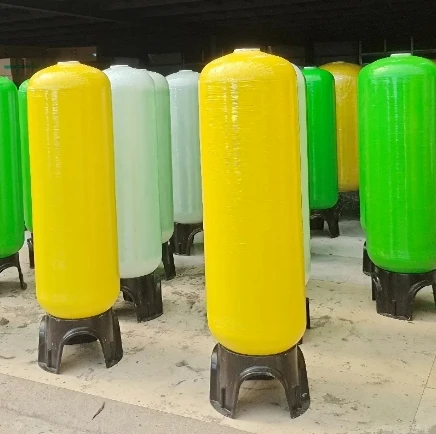loading...
- No. 9, Xingyuan South Street, Dongwaihuan Road, Zaoqiang County, Hengshui, Hebei, China
- admin@zjcomposites.com
- +86 15097380338
- Welcome to visit our website!
grp sectional tank
Understanding GRP Sectional Tanks Benefits and Applications
GRP (Glass Reinforced Plastic) sectional tanks have become increasingly popular in various sectors due to their many advantages over traditional water storage solutions. These tanks, constructed using a composite material that combines glass fibers with a plastic resin, have gained traction in industries ranging from construction to agriculture. This article explores the unique features, benefits, and applications of GRP sectional tanks.
What are GRP Sectional Tanks?
GRP sectional tanks are large, modular storage units that are assembled on-site to meet specific water storage requirements. Their sectioned design allows for easy transportation and installation, making them an ideal choice for a variety of environments. Each section is made from high-quality GRP material, which is known for its durability, corrosion resistance, and lightweight properties.
Advantages of GRP Sectional Tanks
1. Corrosion Resistance One of the most significant benefits of GRP tanks is their resistance to corrosion. Unlike traditional materials such as steel, which can rust and deteriorate over time, GRP tanks maintain their integrity even in harsh environments. This property is particularly advantageous for industries that handle aggressive chemicals or water with high mineral content.
2. Lightweight Construction GRP sectional tanks are much lighter than their metal counterparts, making them easier to transport and install. Their lightweight nature reduces the structural support needed and can lead to savings in construction costs.
3. Customizability GRP tanks can be manufactured in various sizes and configurations, allowing them to be tailored to specific operational needs. This flexibility is beneficial for industries with varying water storage requirements, whether for potable water, wastewater, or process water.
4. Cost-Effective While the initial investment in GRP sectional tanks might be higher than traditional options, their longevity and low maintenance costs make them a financially sound decision over time. They do not require painting, anti-corrosion treatments, or regular servicing, significantly reducing operational costs.
5. Ease of Installation The modular design of GRP sectional tanks simplifies installation. They can be assembled quickly on-site, minimizing disruption and labor costs. This feature is particularly beneficial for projects with tight timelines.
grp sectional tank

6. Thermal Insulation GRP materials have good thermal insulating properties, which help to maintain water temperature and reduce energy costs associated with heating or cooling the stored water.
Applications of GRP Sectional Tanks
1. Water Supply Systems One of the primary applications of GRP sectional tanks is in municipal and industrial water supply systems. They are used for storing drinking water, irrigation, and other essential uses.
2. Fire Protection Systems Many commercial and industrial facilities utilize GRP sectional tanks as part of their fire protection systems to ensure an adequate supply of water for fire fighting.
3. Wastewater Treatment Plants GRP tanks are often used in wastewater treatment facilities to store sewage and treated effluents, benefiting from their corrosion resistance and durability in harsh environments.
4. Agricultural Applications In agriculture, GRP sectional tanks are used for rainwater harvesting, irrigation systems, and as livestock water supply tanks, where strong, reliable storage is critical.
5. Industrial Processes Many manufacturing processes require robust water storage solutions, making GRP sectional tanks an excellent fit for industries such as chemical processing, food and beverage, and pharmaceuticals.
Conclusion
GRP sectional tanks offer a versatile and efficient solution for various water storage needs across multiple industries. Their durability, lightweight properties, and customizability make them an attractive option for modern applications. As industries continue to seek sustainable and cost-effective solutions, the demand for GRP sectional tanks is likely to grow, reinforcing their position in the market as a leading choice for water storage.
-
Transform Your Spaces with FRP Grating SolutionsNewsNov.04,2024
-
The Versatility and Strength of FRP RodsNewsNov.04,2024
-
The Excellence of Fiberglass Water TanksNewsNov.04,2024
-
The Benefits of FRP Grating for Your ProjectsNewsNov.04,2024
-
Elevate Your Efficiency with FRP Pressure VesselsNewsNov.04,2024
-
Welcome to the World of FRP Pressure VesselsNewsOct.12,2024
-
Unveiling the Future of Filtration: Why FRP Filter Vessels are a Game ChangerNewsOct.12,2024
